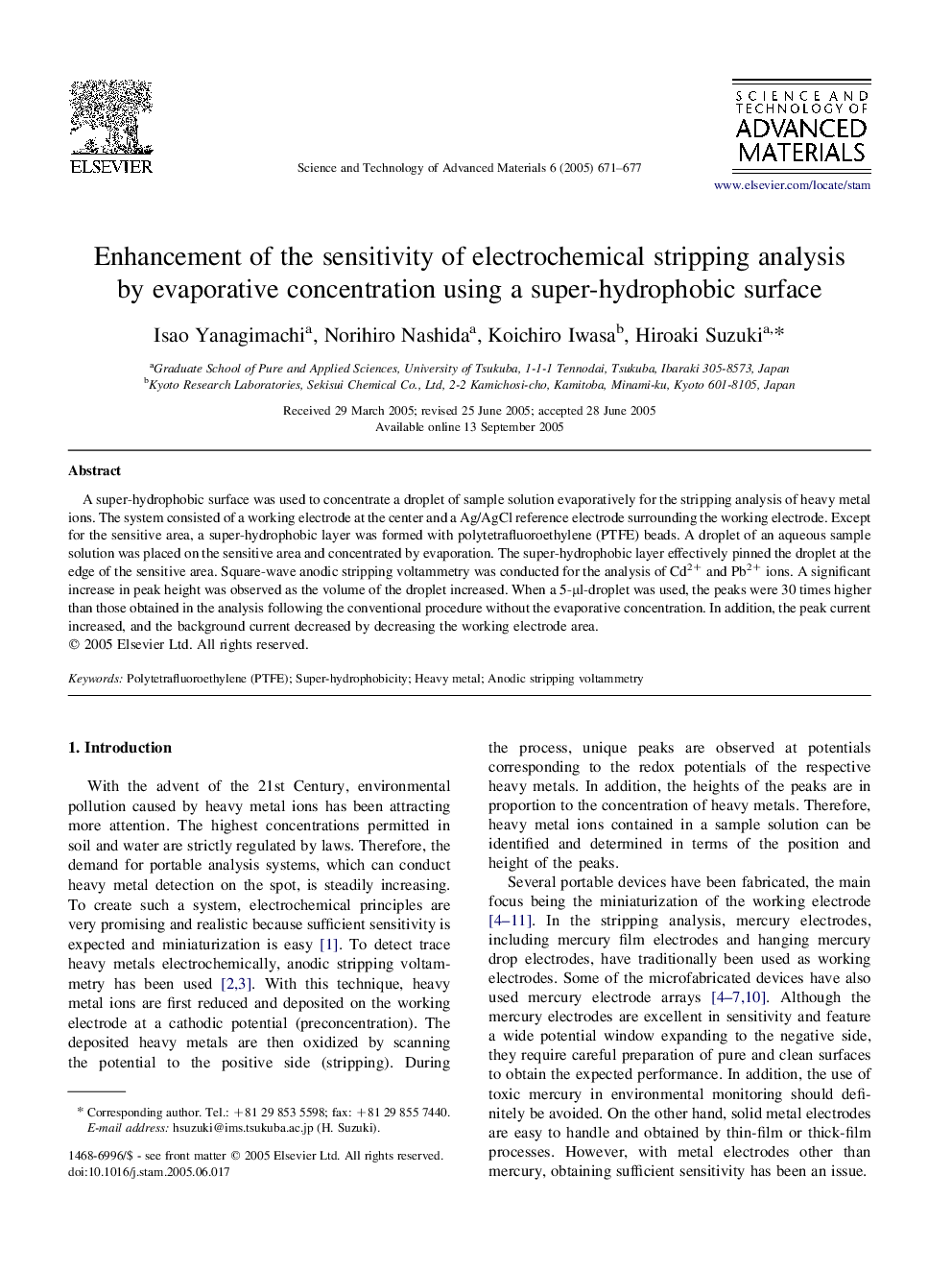| Article ID | Journal | Published Year | Pages | File Type |
|---|---|---|---|---|
| 9801354 | Science and Technology of Advanced Materials | 2005 | 7 Pages |
Abstract
A super-hydrophobic surface was used to concentrate a droplet of sample solution evaporatively for the stripping analysis of heavy metal ions. The system consisted of a working electrode at the center and a Ag/AgCl reference electrode surrounding the working electrode. Except for the sensitive area, a super-hydrophobic layer was formed with polytetrafluoroethylene (PTFE) beads. A droplet of an aqueous sample solution was placed on the sensitive area and concentrated by evaporation. The super-hydrophobic layer effectively pinned the droplet at the edge of the sensitive area. Square-wave anodic stripping voltammetry was conducted for the analysis of Cd2+ and Pb2+ ions. A significant increase in peak height was observed as the volume of the droplet increased. When a 5-μl-droplet was used, the peaks were 30 times higher than those obtained in the analysis following the conventional procedure without the evaporative concentration. In addition, the peak current increased, and the background current decreased by decreasing the working electrode area.
Related Topics
Physical Sciences and Engineering
Materials Science
Materials Science (General)
Authors
Isao Yanagimachi, Norihiro Nashida, Koichiro Iwasa, Hiroaki Suzuki,
